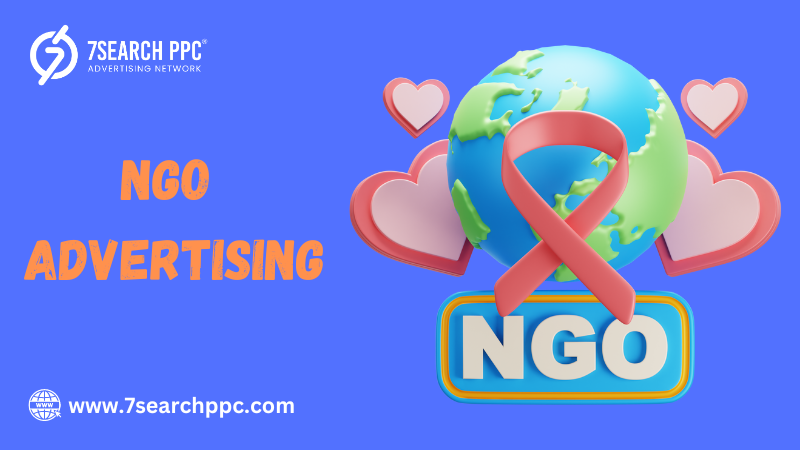Charity ads play a critical role in raising awareness and encouraging donations for nonprofit organizations. In today’s digital age, well-executed charity ads can amplify the reach of nonprofits and foster strong emotional connections with potential donors. This article will delve into how charity ads drive donations and awareness, the different types of ads used by NGOs and charities, and strategies to make these ads more effective.
What Are Charity Ads?
Charity ads, also known as nonprofit or NGO ads, are advertising campaigns created by charities to promote their cause, engage potential donors, and drive contributions. Unlike traditional commercial ads, charity ads focus on evoking empathy and understanding among the audience, often using emotional storytelling to highlight the importance of their mission.

Charity ads are typically seen in various forms, including TV commercials, online banner ads, social media campaigns, and print ads. However, with the advent of digital advertising, NGOs and charities are increasingly leveraging online platforms to reach broader audiences more cost-effectively.
The Purpose of Charity Ads
Charity ads aim to:
Raise Awareness: By spreading the message of a nonprofit’s mission, charity ads educate the public about important social, environmental, or humanitarian issues.
Drive Donations: These ads directly appeal to viewers for financial contributions or in-kind support.
Promote Engagement: Besides monetary donations, charity ads often encourage people to volunteer, sign petitions, or participate in events.
Build Trust and Credibility: Establishing the legitimacy of an NGO or charity is crucial to gaining public trust. Well-crafted ads can enhance a nonprofit’s reputation and credibility.
Types of Charity Ads
There are various forms of charity ads, each with its unique strengths and functions. Understanding the different types can help nonprofits and NGOs craft effective campaigns.
TV and Video Ads
TV ads have been a staple of charity advertising for decades. They combine visual and auditory elements to tell powerful stories that appeal to the emotions of viewers. Video ads on platforms like YouTube also follow this format, allowing NGOs to reach a younger, tech-savvy audience.
Digital Ads
With the rise of digital media, charity ads have found their place in online environments. Digital ads, such as banner ads and social media promotions, can be targeted to specific demographics, making them highly efficient in reaching the right audience. Digital ads also provide immediate opportunities for viewers to donate through integrated call-to-action buttons.
Print Ads
Print ads in newspapers and magazines continue to be an effective medium for charity campaigns. Although they lack the interactive elements of digital ads, they still provide significant reach, especially in regions with limited internet access.
Social Media Ads
Platforms like Facebook, Instagram, and Twitter allow NGOs to run targeted ads based on user interests and behaviors. Social media ads often feature compelling visuals and are designed for quick engagement, making them ideal for driving instant donations and shares.
Billboards and Outdoor Ads
Charity ads can also be seen on billboards, buses, and transit shelters, targeting local communities. Outdoor ads offer high visibility, especially in urban areas, and are often used to raise awareness for large campaigns.
How Charity Ads Drive Donations
The primary goal of charity ads is to encourage donations, but the approach to doing so differs from traditional advertising. Here’s how effective charity ads drive financial support:
Emotional Appeal
Charity ads often rely on powerful emotional narratives that highlight the human impact of a cause. By connecting the audience to the people or communities they aim to help, charities make the issue personal. Emotional storytelling compels viewers to act on their empathy by making a donation.
Clear Call-to-Action (CTA)
A well-designed charity ad always includes a clear and compelling call-to-action, guiding potential donors on the next steps. Whether it’s a “Donate Now” button in digital ads or a toll-free number in TV ads, the CTA must be simple and actionable.
Trust and Credibility
Building trust is essential for driving donations. Charity ads often emphasize transparency, highlighting how donations will be used and showcasing testimonials from beneficiaries. Using recognizable faces like celebrities or respected figures can also boost credibility.
Targeted Advertising
Thanks to advanced targeting tools in digital advertising, NGOs can focus their ads on specific demographics most likely to donate. For instance, using platforms like Google Ads and Facebook Ads allows charities to target people based on their interests, location, and online behaviors.
Urgency and Scarcity
Creating a sense of urgency in charity ads can significantly boost donations. Whether it’s raising funds for an emergency relief campaign or encouraging donations within a specific time frame, urgency motivates people to act quickly.
Matching Donations
Many charity ads leverage matching donation campaigns where contributions are doubled by a corporate sponsor or benefactor. This method incentivizes potential donors by showing how their support can have a greater impact.
Building Awareness Through Charity Ads
In addition to driving donations, charity ads are vital for spreading awareness about important causes. They educate the public about issues that may otherwise remain underrepresented or ignored.
Reaching New Audiences
Through digital platforms and ad networks, NGOs can extend their reach beyond their immediate supporters. Charity ads are a way to introduce new people to a cause and convert them into advocates or donors.
Amplifying Social Issues
Well-crafted charity ads shed light on critical social and environmental challenges, from climate change to poverty. By utilizing media and advertising platforms, charities can bring these issues to the forefront of public attention.
Partnerships with Influencers and Brands
Collaborations with brands and influencers often help NGOs and charities expand their outreach efforts. Many successful campaigns feature partnerships with public figures or corporate sponsors who help amplify the message and encourage donations.
Best Practices for Creating Effective Charity Ads
Creating successful charity ads involves a combination of strategic planning, emotional storytelling, and leveraging the right platforms. Here are some best practices to keep in mind:
Know Your Audience
Understanding your target audience is crucial to crafting ads that resonate. Use insights from past campaigns and donor demographics to tailor your message for maximum impact.
Focus on Impact
Showcasing real-world impact is essential to establishing credibility. Use data, testimonials, and case studies to demonstrate how donations have made a tangible difference.
Use Compelling Visuals
Visuals play a major role in charity ads. Images and videos that evoke emotion, show people in need, or highlight success stories are highly effective in driving engagement.
Leverage Multiple Platforms
Charities should diversify their ad campaigns across several platforms, including social media, search engines, and traditional media. This approach maximizes reach and ensures consistent messaging across various touchpoints.
Test and Optimize
As with any advertising campaign, charity ads should be tested and optimized for performance. Using A/B testing to determine the most effective headlines, images, and CTAs can improve conversion rates.
The Role of Ad Networks in Charity Advertising
Ad networks play a significant role in helping NGOs and charities extend the reach of their campaigns. By partnering with ad networks, nonprofits can distribute their ads across multiple websites and platforms, targeting relevant audiences.
What Are Ad Networks
Ad networks are platforms that aggregate advertising inventory from various sources and match them with advertisers seeking ad space. For NGOs, ad networks like Google Ad Grants, which offers free advertising to eligible nonprofits, can significantly boost exposure without substantial costs.
Why Use Ad Networks
Ad networks provide charities with access to a large pool of potential donors across different websites. This allows NGOs to target people based on their interests, behaviors, and geographic location, ensuring that ads are seen by the right audience.
Maximizing ROI with Ad Networks
Using ad networks effectively can help NGOs maximize their return on investment (ROI) by ensuring that their ads are seen by the most relevant people. By focusing on specific niches, such as environmentally-conscious individuals or people passionate about animal rights, NGOs can increase both donations and awareness.
Conclusion
Charity ads are a powerful tool for nonprofits and NGOs, helping them drive donations and raise awareness for critical causes. By using emotional storytelling, compelling visuals, and clear calls to action, charity ads connect with audiences in meaningful ways. Additionally, leveraging platforms like ad networks can further extend the reach of these ads, ensuring that they have the maximum impact.
Whether it’s through video ads, digital campaigns, or traditional print ads, charity advertising is an essential part of any nonprofit’s strategy to achieve their mission and bring about positive change. By understanding the intricacies of charity ads and applying best practices, NGOs can build more successful and impactful campaigns that resonate with donors and communities alike.
Frequently Asked Questions (FAQs)
What are charity ads?
Ans. Charity ads are promotional campaigns created by nonprofit organizations and NGOs to raise awareness about their causes, encourage donations, and engage with potential supporters. These ads can take various forms, including digital ads, print ads, TV commercials, and social media promotions.
How do charity ads drive donations?
Ans. Charity ads drive donations by using emotional storytelling, clear calls-to-action, and building trust and credibility. They often highlight the real-world impact of contributions, create a sense of urgency, and provide easy ways for viewers to donate, whether online or via text.
What types of platforms are used for charity ads?
Ans. Charity ads can be distributed across multiple platforms, including:
Social Media: Platforms like Facebook, Instagram, and Twitter allow charities to run targeted ad campaigns.
Search Engines: Google Ads and other search engines enable nonprofits to reach potential donors actively searching for related causes.
Print Media: Newspapers, magazines, and brochures remain effective for local outreach.
Television and Radio: Traditional media channels can reach broad audiences, particularly for major campaigns.
Why are emotional appeals important in charity ads?
Ans. Emotional appeals are crucial because they help create a personal connection between the audience and the cause. By telling compelling stories that evoke empathy, charity ads can motivate viewers to take action, such as making a donation or sharing the ad with others.



